Do sugar gliders stink? Wondering how to bathe a sugar glider?
Gliders are some of the cleanest pets, and they are constantly grooming themselves unless they’re sick or stressed.
In any event that they accumulate poop or dirt on their fur and develop a foul odor, you may find it necessary to bathe them.
Below is a detailed process on how to wash a sugar glider.
Table of Contents
Are You Supposed To Bathe Sugar Gliders?
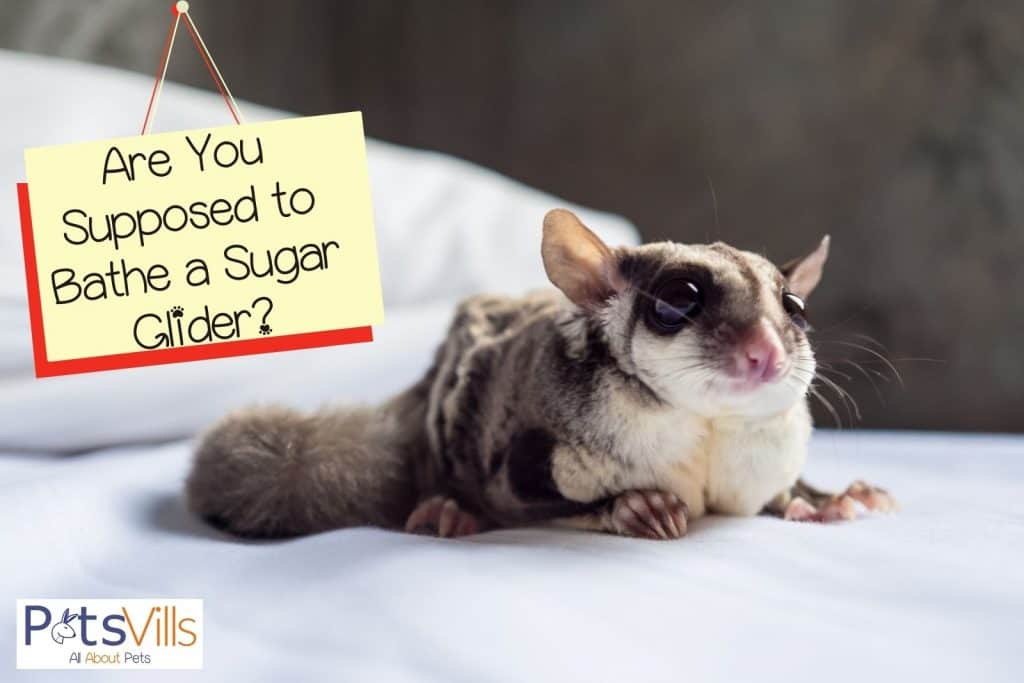
Not really. Sugar gliders are capable of keeping themselves clean, so regular bathing is not necessary.
If you realize your sugar glider is not grooming herself, visit your vet as soon as you can for diagnosis and treatment.
How Do You Bathe A Sugar Glider?
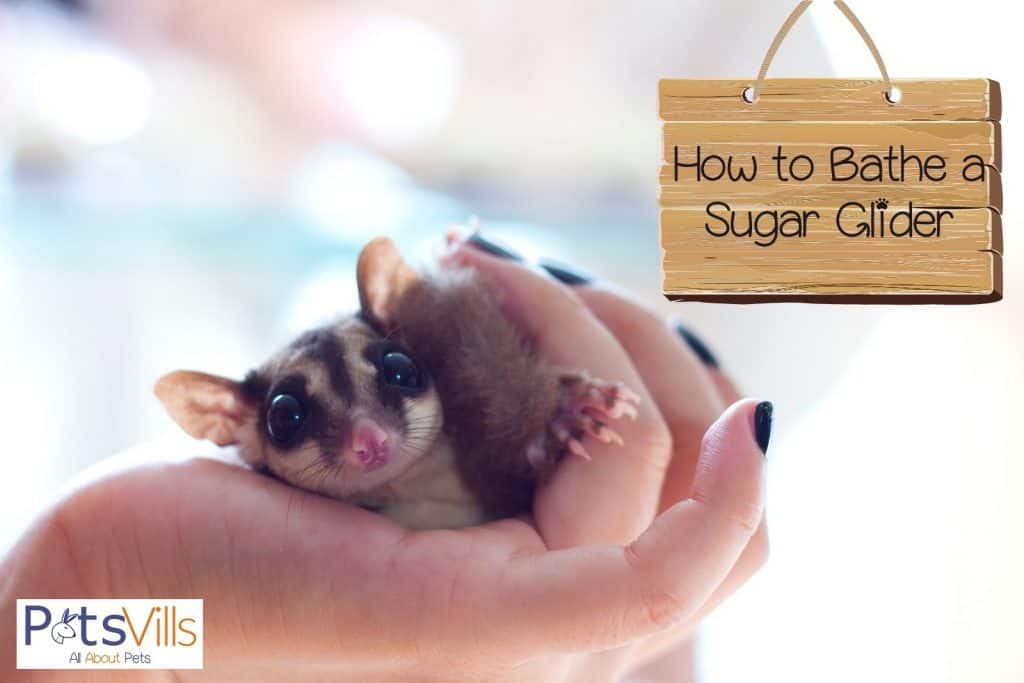
In the extremely rare event that you do need to bathe a sugar glider, below is a detailed step-by-step process.
ALSO READ: Can Sugar Gliders Be Potty Trained?
#1 Check Her Health
Make sure your sugar glider is in good health before attempting to wash her.
You should also approach her cautiously since, like all other pets, she may bite or get aggressive if you’ve not bonded well with her.
#2 Get The Right Tools
Baby wet wipes are a lifesaver for sugar gliders owners.
Not only can they use to clean them, but they can also use them to help “empty” a sugar glider’s belly to get rid of the odor – I will discuss this in detail later in the article.
Besides baby wet wipes, you also need warm water and a towel.
One mistake some sugar gliders owners make is bathing their babies with human shampoos. That’s a bad idea since you don’t know how your pet’s skin will react to the shampoo.
Luckily, there are shampoos explicitly designed for bathing sugar gliders. And if you don’t have access to these types of shampoos, you can use small amounts of baby shampoos.
#3 Bathing Your Sugar Glider
You should start by determining why your sugar gliders need a bath. As mentioned earlier, sugar gliders groom themselves all the time.
However, feces and urine may get tangled into their fur, causing a very unpleasant odor.
Once you’re sure they need a bath, use the baby wipes to wipe their tiny bodies.
While this may not be a complete bath, it will eliminate most of the dirt and leave your pet with a more appealing smell.
If the baby wipes didn’t get rid of the odor, you could give them a complete bath. Here’s how to do it;
- Fill a bowl or sink with bath-warm water. Make sure it’s not too deep since sugar gliders can’t swim, and you risk drowning them.
- To effectively clean your pet, place her on an elevated surface.
- Apply some baby shampoo on your sugar glider’s body and massage as you thoroughly clean her.
- Rinse the pet in warm water.
- Wipe the pet’s body with a towel or dry cloth.
NOTE: Sugar gliders can suffer from hypothermia if you let them get too cold. Don’t let them air dry since this will make them too cold.
Ensure you dry them immediately with a warm towel after bathing them.
To speed up the drying process, you can place your pet close to a sugar glider heat rock or hold them against your body.
But don’t be tempted to use a blow dryer. Blow dryers emit very high temperatures, which could damage your pet’s skin, ears, or eyes.
Check: Can Sugar Glider Get Fleas?
Other Ways to Eliminate Sugar Gliders Odors
Besides bathing them, there are other ways to get rid of odors from sugar gliders.
Below are some of the reasons why your pet may have a foul smell and how to deal with each cause.
#1 Food
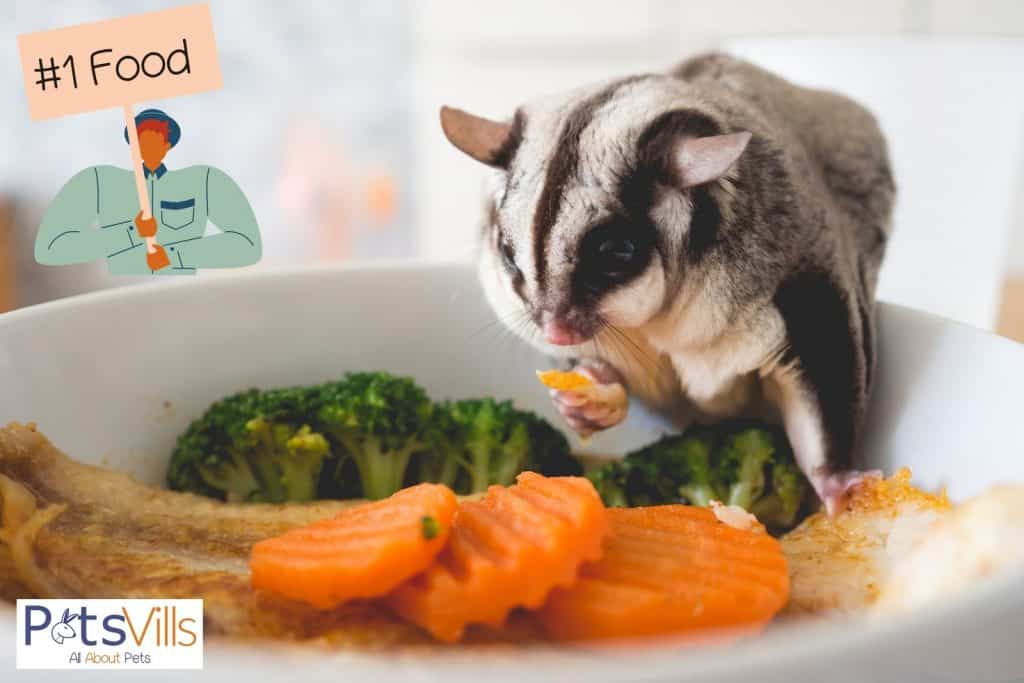
That’s right. If you feed your sugar glider with the wrong foods, you’ll experience a foul odor from urine and feces.
This should not be confused with their defense mechanism, which may involve a strong smell and a white fluid coming out of their rectum.
This smell eventually goes away as your pet gets to know you better.
But the smell caused by a bad diet will not go away until you change the foods you’re feeding to your pet.
How to fix it
According to the North Carolina State University, when in the wild, sugar gliders feed on nectar, acacia leaves, sap from trees, insects, pollen, and fruit.
Veterinarian Lorraine A. Corriveau, an expert in small animal pet care, states that sugar gliders when in zoos, feed on bananas, grapes, papayas, apples, kiwi fruit, pears, oranges, pawpaws, melons, carrots, sprouts, broccoli, squash, and tomatoes.
To be honest, it’s not that easy to replicate a sugar glider’s diet with what they feed on in the wild. The North Carolina State University suggests a diet that includes;
Leadbeater’s mixture (60%)
This is a mixture designed for Leadbeater possums whose diet is similar to that of sugar gliders. It includes
- ½ cup honey
- ¼ cup apple juice
- 1 boiled egg without the shell
- 4 ounces of yogurt Gerber juice
- 1 tbsp. of Rep-Cal Vitamin supplement
- 2 tbsp. Rep-Cal Calcium supplement
- 1 oz of chicken baby food
- ¼ cup wheat germ
- ½ cup dry baby cereal
- Mix them thoroughly with a blender adding the items one by one, and store the mixture in a freezer.
Pelleted Omnivore Diet (30%)
Feed them 1 tbsp of pelleted omnivore diets such as Zupreme or Mazuri.
Vegetables, Fruits, and Nuts (10%)
When feeding the Leadbeater’s diet, vegetables, fruits, and tree nuts should form only a tiny part of the diet.
This is because they get most of the nutrients from the mixture. You can also feed insects such as mealworms as treats.
NOTE: There are several home diets you can follow. The Leadbeater’s mixture is only one of them.
Check out these 4 most nutritious sugar glider food recipes to learn more. Just make sure you consult a qualified vet on the best foods to feed your pet.
Keep Them Clean
Besides giving them the right food, you also need to make them poo and pee effectively to prevent foul odors throughout the day.
In most cases, sugar gliders start “emptying” their stomachs as soon as you start removing them from their cages.
Ensure you have several baby wipes close to the cages at all times.
If there are at least two sugar bears in the cage, let them out one by one.
As soon as they’re out, you’ll realize that their little bellies are stimulated to start releasing the waste contents.
The trick to making sure they empty everything is to form a “treadmill”.
This is where you place a couple of baby wipes on both of your hands and make the pet believe she’s moving, while all you’re doing is moving her from one hand to the other.
This stimulates their stomachs to empty the contents, and having the baby wipes makes sure they don’t make a mess everywhere.
Sugar gliders take 5 to 7 minutes to empty their bellies. And once they’re done, you’ll be in the clear for the next 3 to 4 hours, and you’ll have to repeat the process.
To know if they’re done, just let your pet lie on her back and use the baby wipes (told you baby wipes are very handy) to touch her private area, and she’ll release all the remaining contents.
So, how do you know when she wants to poo again? Once she wakes up, she’ll start moving around in the pouch – just like we go to the bathroom immediately after we wake up.
Eventually, you’ll learn the capacity of your pet’s belly contents, and you’ll understand her schedule, and she’ll adhere to yours.
With the right food and the proper emptying techniques, you won’t have to deal with bad odors.
#2 Male Sugar Gliders Marking Their Territory
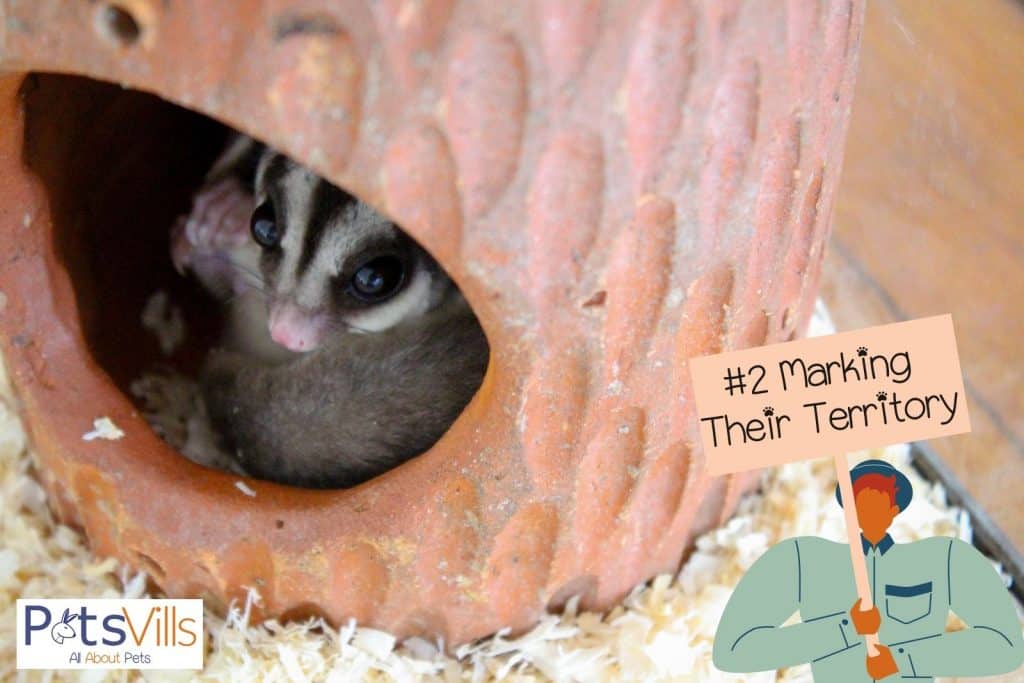
Like most animals, male sugar gliders have scent glands at their heads and chests.
And they mark their territory by scenting everything they touch, especially in their cages.
This leads to a very unpleasant smell that tends to be more pronounced during the mating season.
Check: How Big Do Sugar Gliders Get?
How to fix it
Since it’s a natural process, the best way to get rid of this odor is to neuter the males. If you don’t want your pets reproducing, you don’t have to keep the males intact.
#3 Untidy Cages
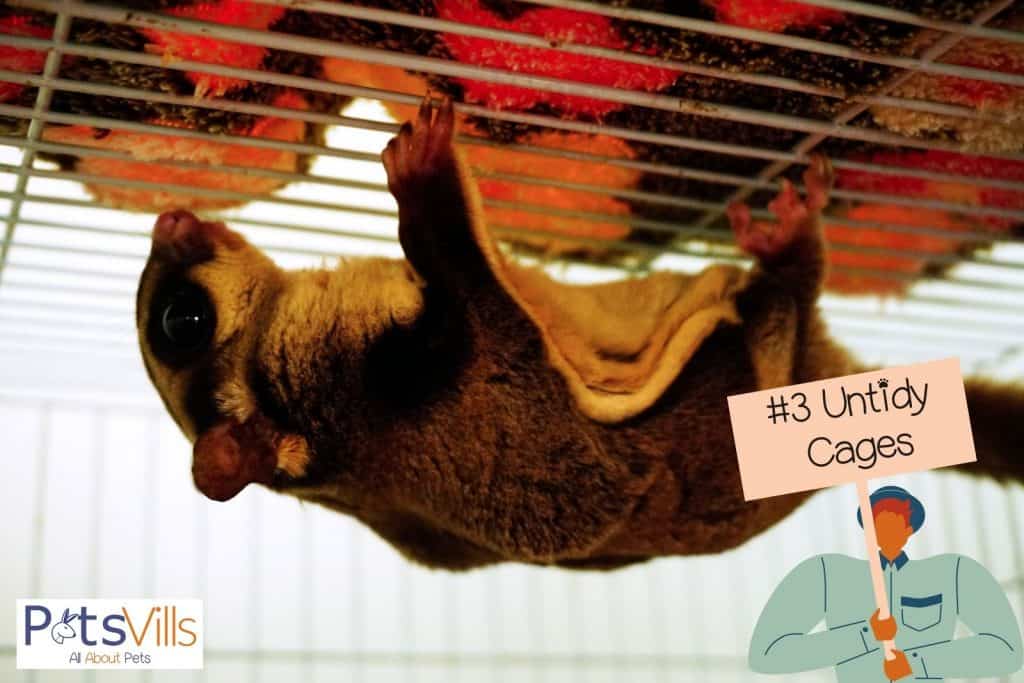
Your pet could be looking unhealthy and “dirty” because of an unattended cage.
How to fix it
You can place the pet in one corner and clean the rest of the area.
Once one area is clean, you can shift the pet to the clean area and clean the rest of the cage. But I think it’s easier to remove the pet and clean the cage freely.
Clean the sugar glider bonding pouch, bed, hives, cage trays, and all the areas where the pets spend their time.
Clean the food leftovers and replace food and water daily. It would also help if you placed liners at the bottom of the cage and replace them every time you want to clean.
This makes the process easier. Better yet, you can also train your pet to use a litter box.
This not only makes it easier to clean, but it also prevents your pet from pooping anyhow in the pouch.
Thoroughly cleaning the cages every two weeks is enough to keep the odors away.
How to Bathe a Sugar Glider FAQs
What Happens if A Sugar Glider Gets Wet?
Getting a sugar glider wet may not affect or kill her. However, if you make her wet and let her get cold, it will greatly lower her body temperature (hypothermia) and other respiratory issues, which could lead to death.
Is Giving Sugar Gliders Baths good?
Bathing your sugar glider is not always the best idea. They could drown, develop hypothermia or pneumonia, or develop a bad reaction to the shampoo. But you can bathe them occasionally if feces, urine, or other dirt has lodged up in their fur and causing bad odors.
Final Words
We’ve established that sugar gliders don’t need regular baths. They are known for grooming themselves and are pretty meticulous at it.
If you find it necessary to bathe them, use baby wipes, warm water, warm towels, and baby shampoos.
And make sure you don’t leave them wet for long.
Some ways to eliminate bad odors caused by sugar gliders is to feed them correctly, learn their pooping routines, clean their cages, and neuter the males.
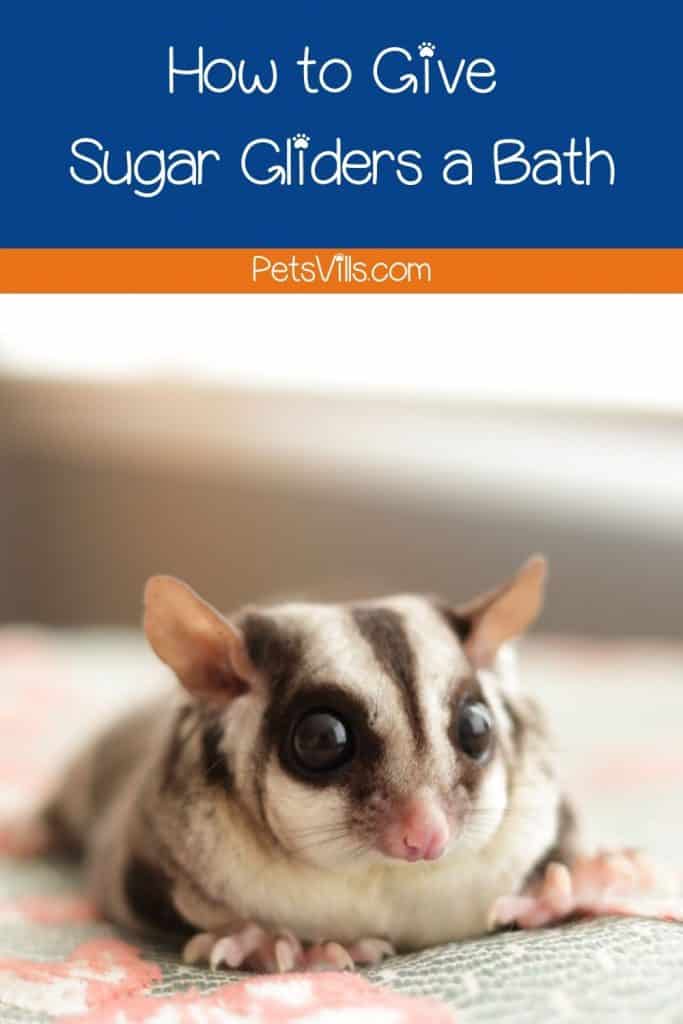
Do you have other thoughts on how to bathe a sugar glider? Share with us below!
Barry Stingmore is a British content writer living in Fuerteventura, Spain. An animal lover at heart, he shares his home with a dog and four rescue cats and has a passion for writing about animals big and small.
Barry loves finding answers to your animal-related questions, the more research involved the better! You can rely on him to find the facts.
Find him on FACEBOOK, TWITTER AND Linkedin
Read his latest ARTICLES.
Find more about him HERE.

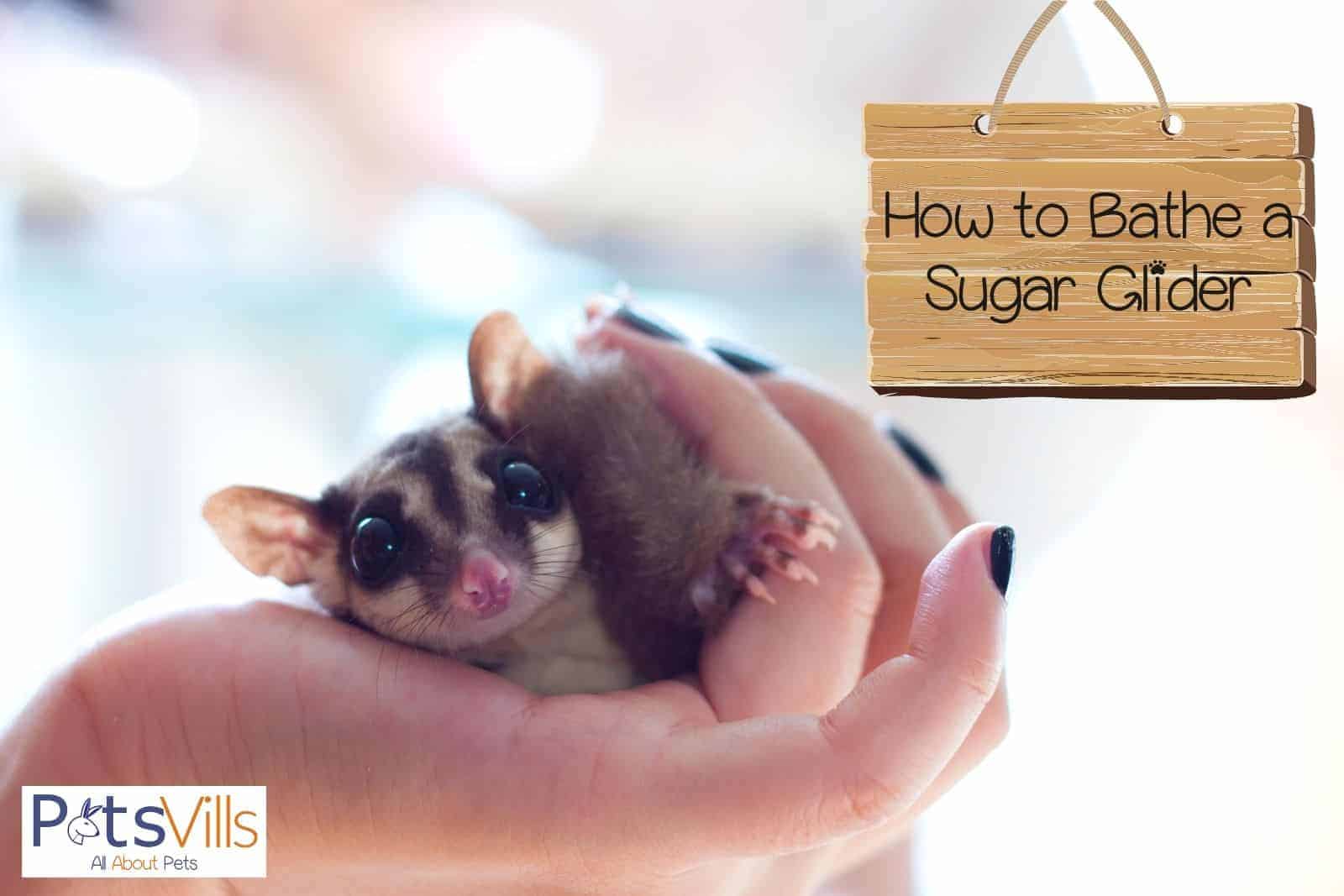


![Cute Sugar Glider Drinking From The Bottle [Must-Watch Video]](https://petsvills.com/wp-content/uploads/2022/09/Cute-Sugar-Glider-Drinking-From-The-Bottle-Must-Watch-Video-211x150.jpg)
